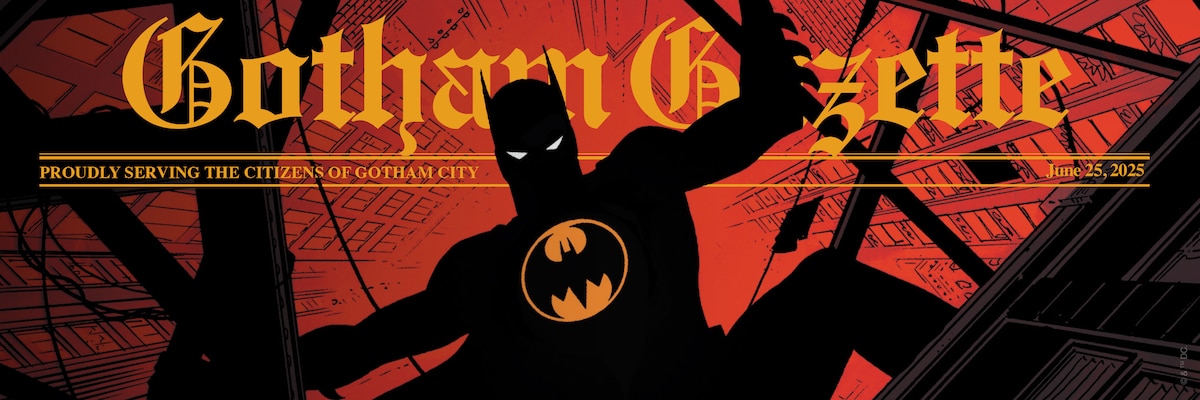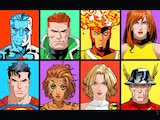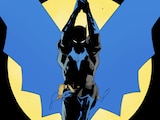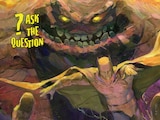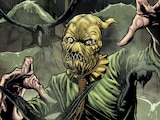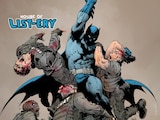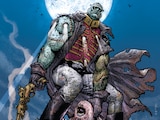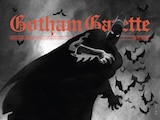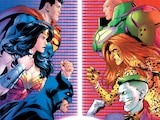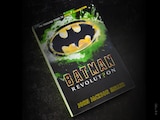Gotham City is a busy place, with a lot going down each and every week. In this monthly column, Joshua Lapin-Bertone helps you stay on top of it all by letting you know what you should be paying attention to within the Bat-Family…and why.
“Gotham City. I think we need to talk.”
These are the words that open Batman: Dark Patterns #7. Gotham is giving Batman some problems.
That’s nothing new, as the Dark Knight has been solving the city’s problems for over eight decades. However, this is a different type of problem. This isn’t Batman tackling an Arkham breakout, a natural disaster, or a criminal conspiracy. The problem is the Dark Knight’s relationship with the city itself.
This relationship is explored all throughout Batman: Dark Patterns, a twelve-issue limited series written by Dan Watters and penciled by Hayden Sherman. (That’s right, the Absolute Wonder Woman star currently has TWO series coming out from DC.) The evergreen Dark Patterns is set during the early days of Batman’s career, while he’s still trying to find his footing as a crimefighter. Every three issues gives us a new case, resulting in a tone that’s like a fusion between Matt Reeves’ The Batman and Batman: The Animated Series.
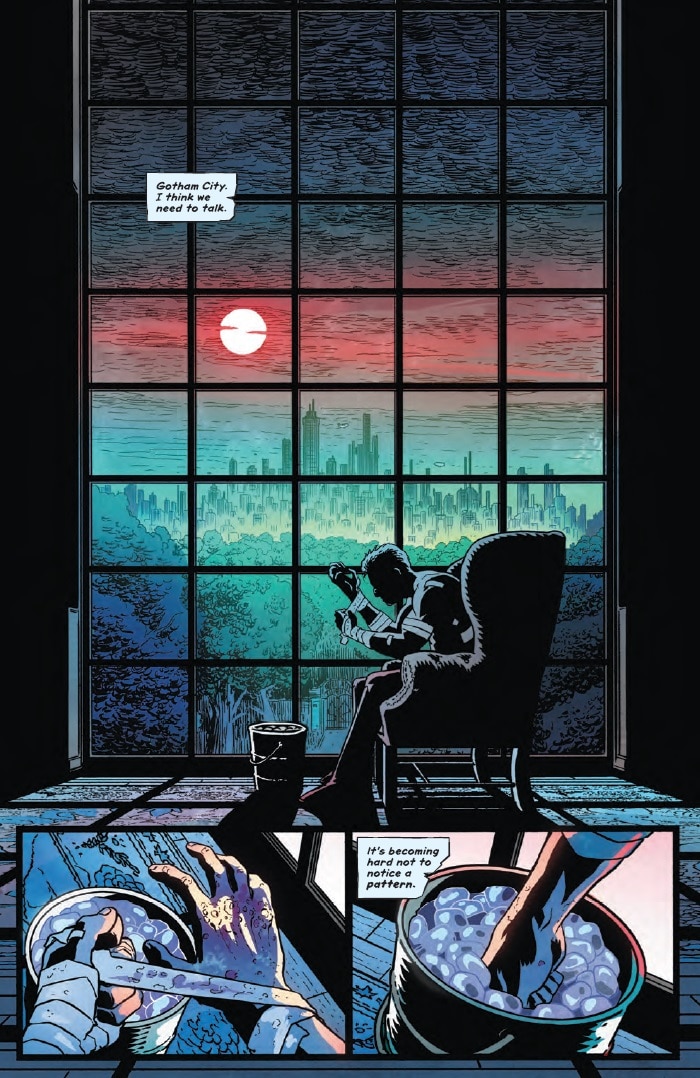
The series is filled with violent acts and deranged individuals, and by the time we get to issue #7, it’s all become too much for the Dark Knight. He contemplates his relationship with Gotham and wonders if the city itself is trying to destroy him.
“It’s beginning to feel like you’re trying to burn me,” Batman silently muses. “Like you see Batman as a fever. One that might be exterminated by raising your temperature.”
To be fair to Batman, it does seem like the city itself is against him. The first case, covered in Batman: Dark Patterns #1-3, finds the Dark Knight visiting a Gotham suburb called Green Fields. Due to chemical waste, the citizens of the suburb are unable to feel pain. This has horrifying implications, as a woman sleeps through a housefire that burns her entire body.
When a few Green Fields residents attack Batman, this ability also allows them to get the upper hand on him. And then there’s the Wound Man, a Green Fields resident who is obsessed with pain and inflicting it on others. His body is covered in nails, pins and other objects that pierce his skin. Sherman really outdid themself on this design because it’s one of the most visually horrifying villains I’ve ever seen in a Batman comic.
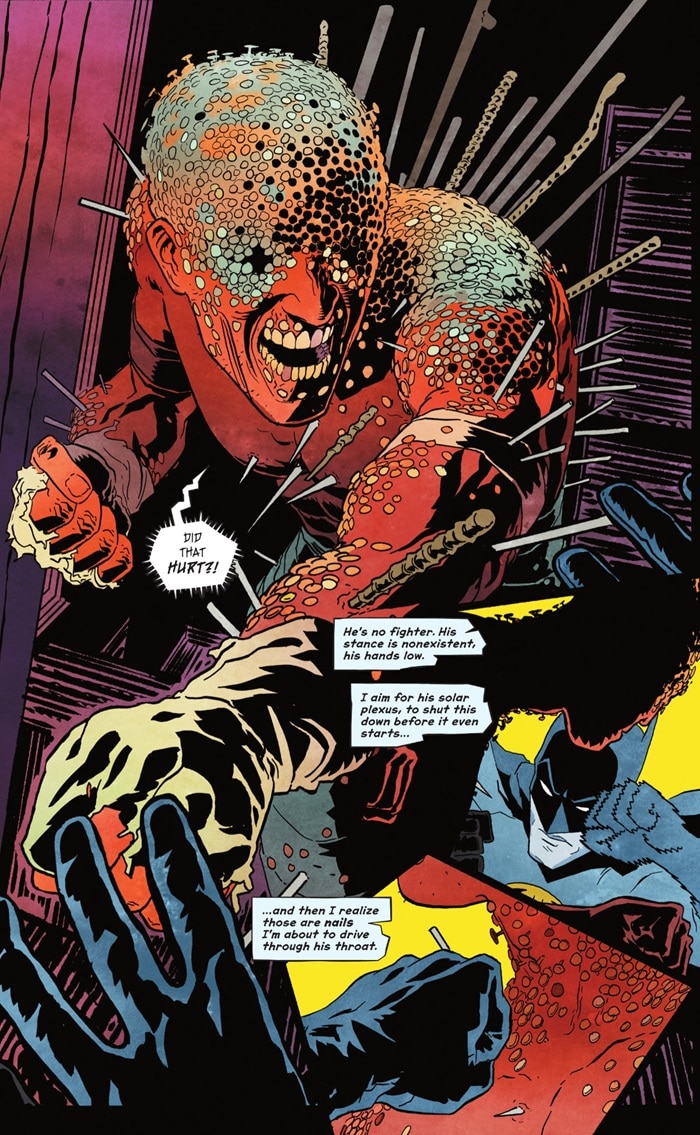
Green Fields and the Wound Man aren’t a problem that Joker or Two-Face created. It came from the city itself. This idea is explored further in Batman: Dark Patterns #4-6, which features one of the most original Batman vs. Scarface stories I’ve ever read.
Aside from the introduction, the entire story takes place inside a single building. Now, I don’t have time to go through every Batman back issue from the last eight decades, and I’ve already used my Alex Jaffe Ask…the Question privileges for the month, but I’m going to assume this is the first time a Batman story stays in the same building for three issues. It’s certainly not a common thing.
The Dark Knight enters an apartment building to rescue a hostage, but he quickly becomes disoriented. The building was constructed in such a way that sound bounces around, making it hard to determine a noise’s source. For example, Batman hears a criminal and believes they’re in the same hallway as him, but they’re actually a few floors above him.
You know who this building would be perfect for? A ventriloquist.
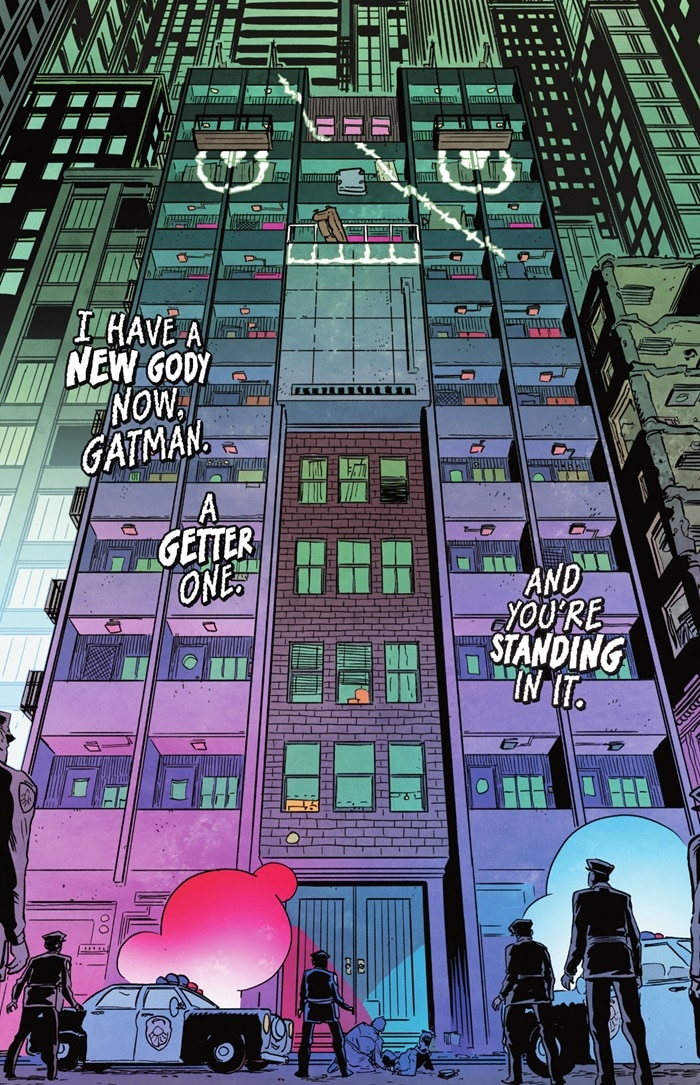
As thus, the building becomes Scarface Towers. The mobster is no longer a puppet, he’s now an entire building. Once again, I have to give credit to Sherman, because the art goes a long way in selling Batman’s disorientation. The panels are slanted and the building looks like a labyrinth. This storyline could be seen as another example of the city turning against Batman, as he battles one of Gotham’s oldest apartment buildings.
Which brings us to Batman: Dark Patterns #7, the latest issue and the start of the title’s third case. Once again, we’re exploring dark and twisted corners of Gotham that we haven’t seen before. As Batman investigates a fire, he travels through a Gotham City neighborhood called the Rookery.
“The streets have no names or numbers,” he says. “Half the buildings have no clean running water or proper electrical wiring. Some are simply constructed by the residents, wherever they feel like. Rooms balanced precariously over alleyways. Overlapping. Tunneling through. It cannot be navigated by intuition. Only by those who know it. I need guidance.”
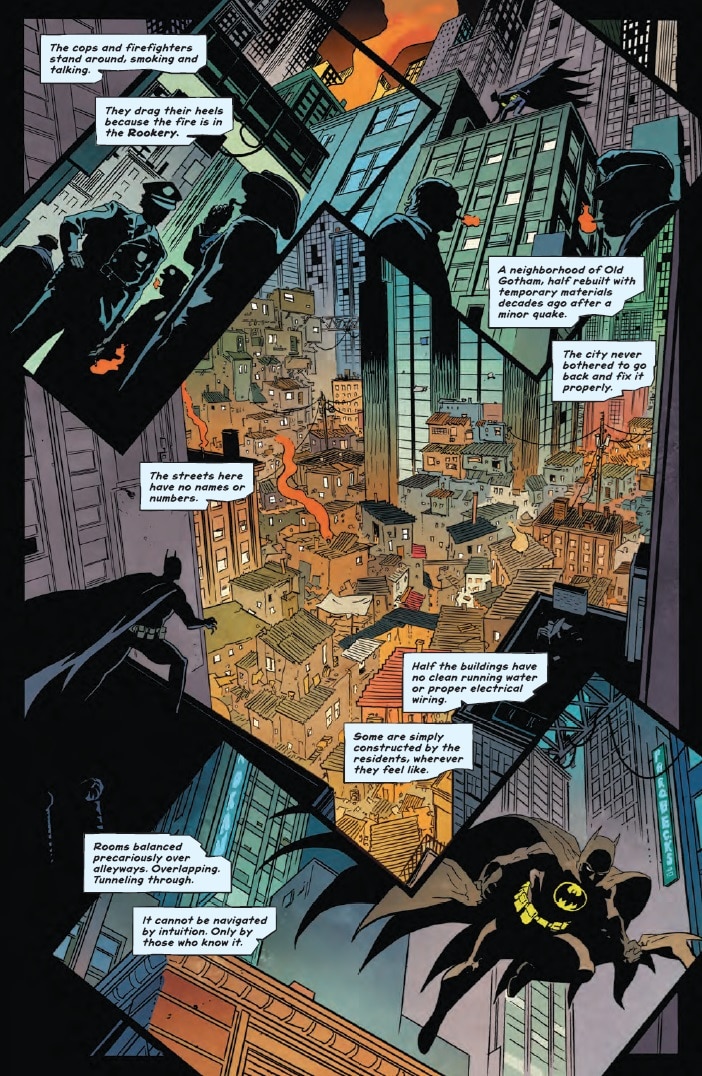
That’s right, this is an area of Gotham that Batman needs help getting through. Even with how well he knows the city, Dark Patterns seems to be finding new ways for it to surprise Batman. Watters and Sherman have done some amazing storytelling here, finding new and creative ways to explore the city Batman’s called home for over 75 years.
Don’t sleep on Batman: Dark Patterns. Even longtime Bat-fans might learn something new about Gotham—if it doesn’t destroy you first.
Batman: Dark Patterns #7 by Dan Watters, Hayden Sherman and Triona Farrell is now available in print and as a digital comic book. The prior six issues of Batman: Dark Patterns can be read in full on DC UNIVERSE INFINITE.
Joshua Lapin-Bertone writes about TV, movies and comics for DC.com, is a regular contributor to the Couch Club and writes our monthly Batman column, "Gotham Gazette." Follow him on Bluesky at @joshualapinbertone and on X at @TBUJosh.
NOTE: The views and opinions expressed in this feature are solely those of Joshua Lapin-Bertone and do not necessarily reflect those of DC or Warner Bros. Discovery, nor should they be read as confirmation or denial of future DC plans.
